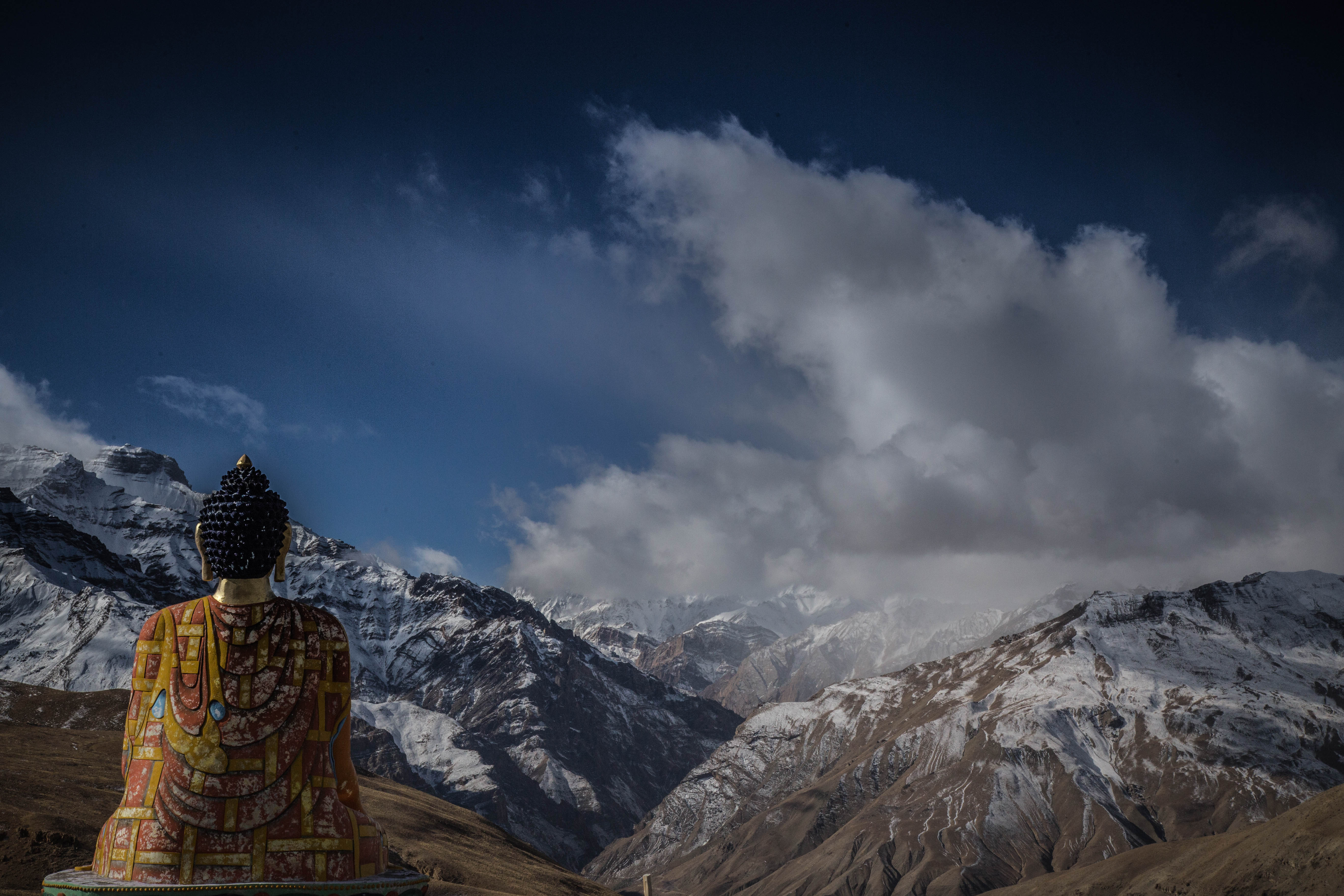The Spiti Valley is an exquisite cold desert mountain valley in Himachal Pradesh, India. The stunning Spiti valley is located at a very high altitude in the Himalayas. “Spiti” means the ‘middle land’ which means that the valley is the middle land between India and Tibet.
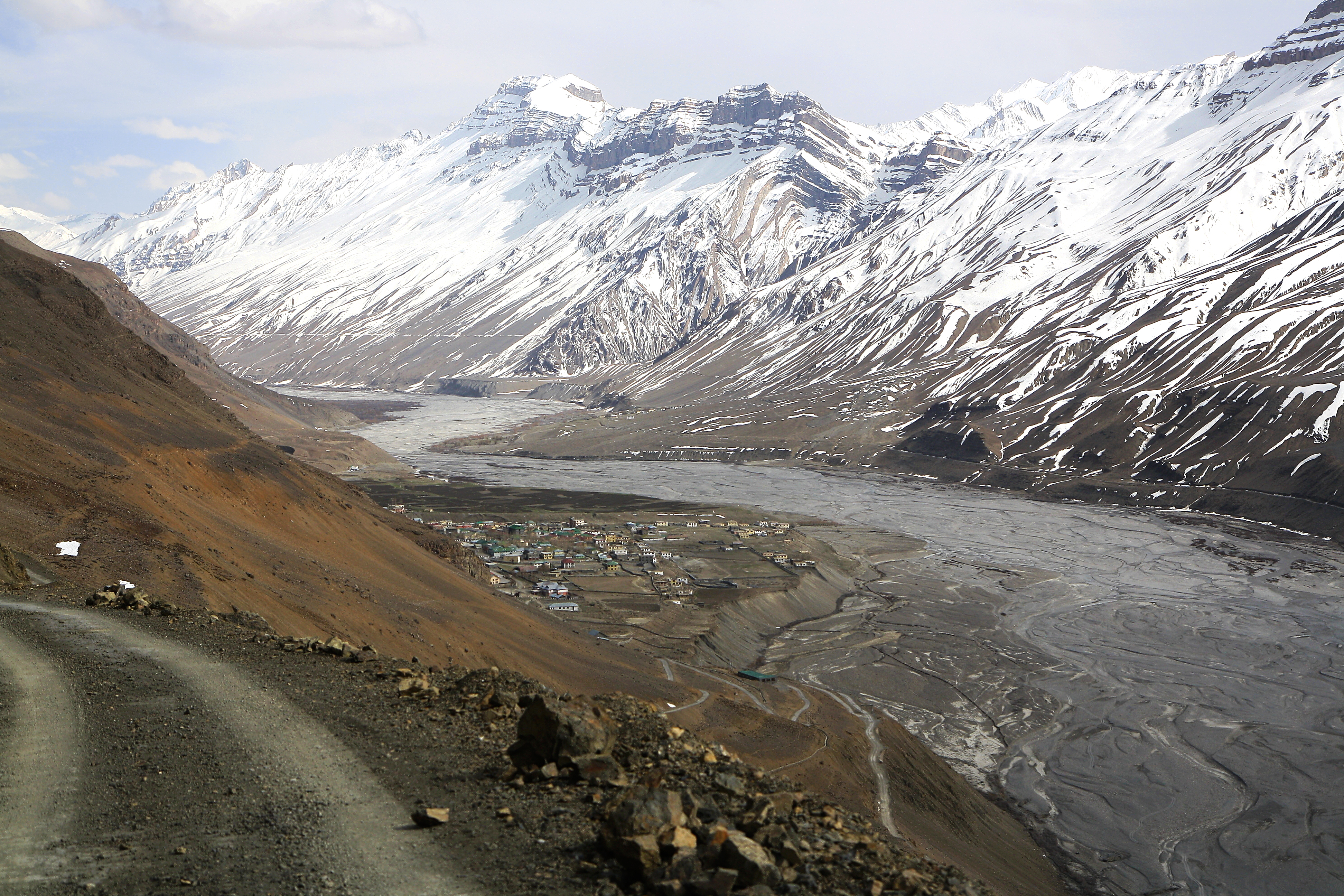
The Spiti valley is one of the most popular sites in Himachal Pradesh due to the snow-clad pristine scenery, extensive ravines speckled with lush green vegetation, sparkling glaciers, shimmering blue streams, glorious monasteries and picturesque villages.
The heavenly land of Spiti embraces travellers with its untouched charm and breath-taking views of the sumptuous Himalayan deserts and grasslands.
The Spiti valley and the encircling region is one of the least inhabited regions in India. The valley is also the gateway to the northernmost limits of the country.
The Spiti valley is encompassed by numerous mountain ranges. Spiti and Lahaul are separated from the Kullu valley by the Rohtang Pass(13,054 feet). Lahaul and Spiti are divided from each other by the Kunzum Pass(15059 feet). Due to snowfall and thick icing conditions, the valley is cut off from the north for about 6-8 months of the year.
The Buddhists consider the Spiti valley as their aesthetic centre. The Toba monastery in the valley is one of the oldest monasteries in the world. It has also served as a set for various movies due to its tremendous beauty.
Some of the places to visit in the valley are Kaza, Chandra Tal Lake, Tabo caves and Tabo monastery, Rohtang pass, Key monastery, Hikim village and Chicham bridge. The Spiti valley is an excruciatingly beautiful landscape, that is no less than paradise on Earth. It is a must-visit for all travel enthusiasts.
The altitude of Spiti Valley: 12,500ft
Best time to visit: Summer(March-June)
Spiti Valley Summer Expedition Itinerary 2020:
Day1: Shimla-Narkanda
The journey starts with a drive from Shimla, passing through Lower Kinnaur and Upper Kinnaur on the way. We finally arrive in Manali through the Lahaul. Finally, we reach Narkanda which is our camping site.
Once everyone is freshened up after the long drive, we take a tour of the Kothgarh Apple factory. Learn about various delicious fruit recipes at the apple factory. The evening will be spent in group activities and live music around a bonfire.
Travelling Distance:60 km
Altitude: 2708mts
Day2: Narkanda-Chitkul

The Chitkul village shares its border with China and it is the last point in India, where people can go without a permit. After reaching Chitkul, you can explore the village.
It is known for its huts having roof-tops made of slate or wooden planks. Also, you will go for a short trek from the village to the adjacent mountains of Kinnaur and Kailash range for a better view of the valley.
Travelling Distance:164km
Travelling Time:5-6 hours
Altitude: 3450mts
Day3: Chitkul to Nako
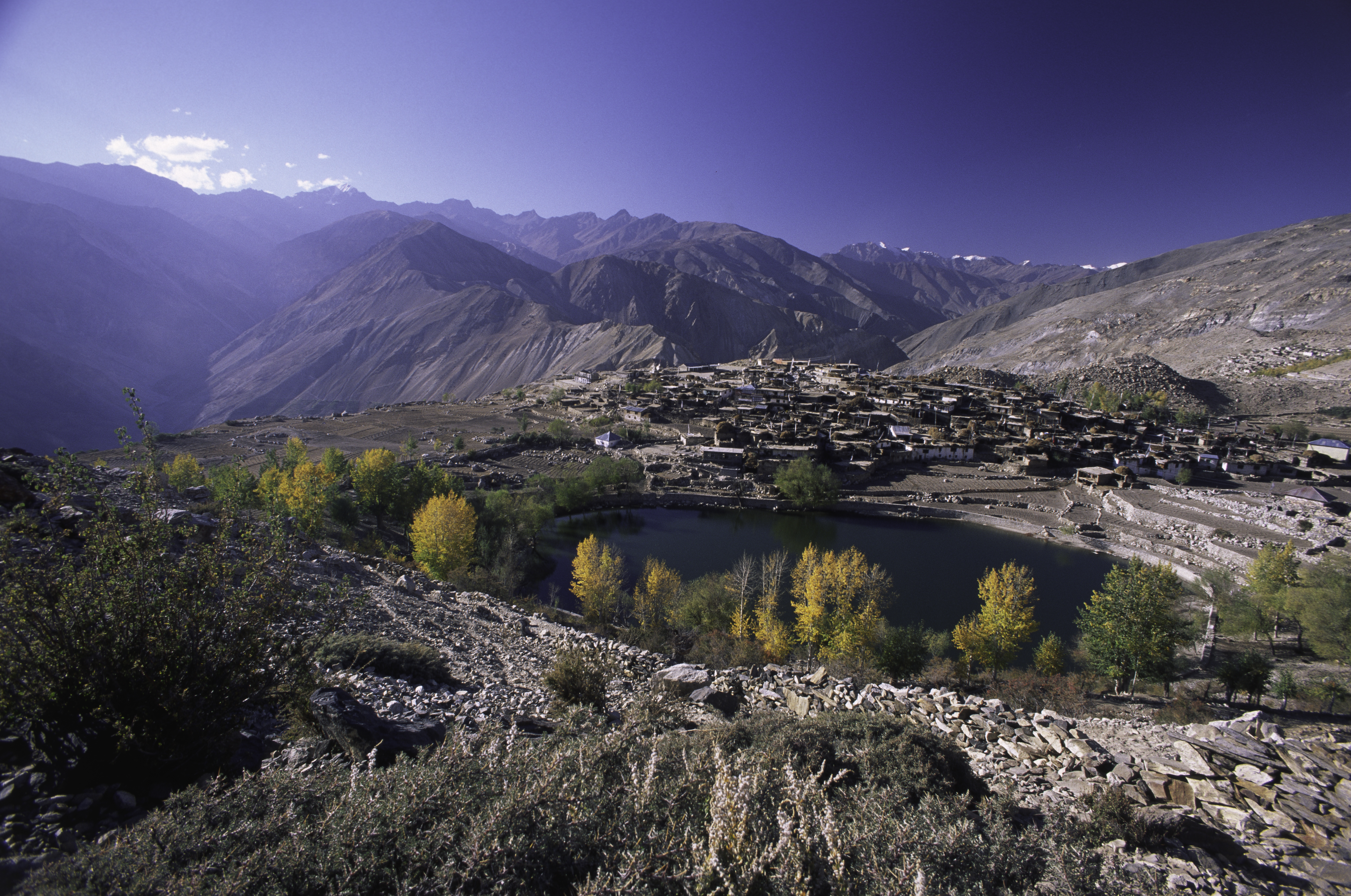
We start for Nako at day-break. The forested region is left behind as we enter Upper Kinnaur, which marks the beginning of the cold deserted region. We take a halt at Kalpa for lunch.
The Kalpa Temple complex is a brilliant piece of architecture where the Hindu and the Buddhist complexes were combined. After departing from the Kapla temple complex, we drive to the suicide point and Roghi village.
The speciality of this region is the abrupt transition of topography from the lush Himalayas to sudden steep drops.
The Tibetan Nako village is present in the Kinnaur district. This is the highest settlement in the valley. The Nako lake bordering the village adds to the charm of the village.
The lake is fringed with willows. We walk to the village and pay a visit to the monastery overlooking the village. After that, we visit the Nako lake, which is a spectacular sight during sunset. The night stay is at the campsite at Nako.
Travelling Distance: 100km
Travelling Time: 3-4hrs
Altitude: 3662mts
Day4: Nako to Mudh
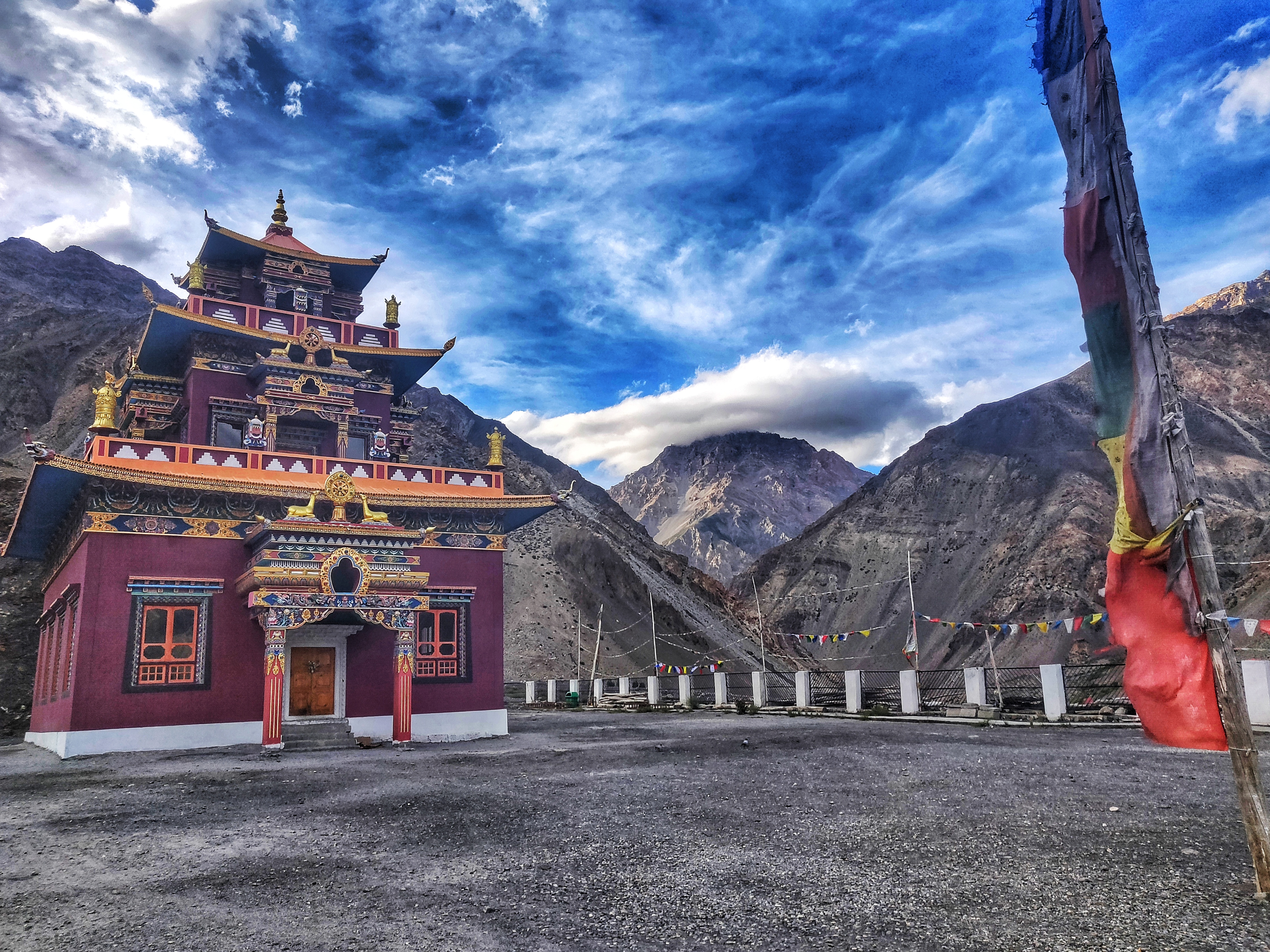
Post-breakfast we leave for the Gue Monastery which is located at a distance of 12km from Nako. The Gue monastery is famous for the remarkably well-preserved mummy of Sangha Tenzin, a Buddhist monk who started the process of self-mummification while he was still living.
The mummy of Sangha Tenzin is over 500 years old. Our next halt will be at Dhankar Gompa, a serene complex tucked in the abyss of these cool deserts.
Post lunch we depart for Pin valley and take a halt at Mudh after crossing over the Pin river. The Lingthi Bridge leads us to the unexplored Pin Valley National Park, having a variety of flora and fauna. Pin valley, unlike Spiti, has lush green mountains.
Mudh is a picturesque village in the Pin valley which has breath-taking views of the green valley. It looks like the valley is covered with a green carpet with snow-clad mountains in the backdrop. The night stay is at Mudh.
Travelling Distance: 179km
Travelling Time: 6-7 hrs
Altitude: 3819mts
Day 5: Mudh- Kaza
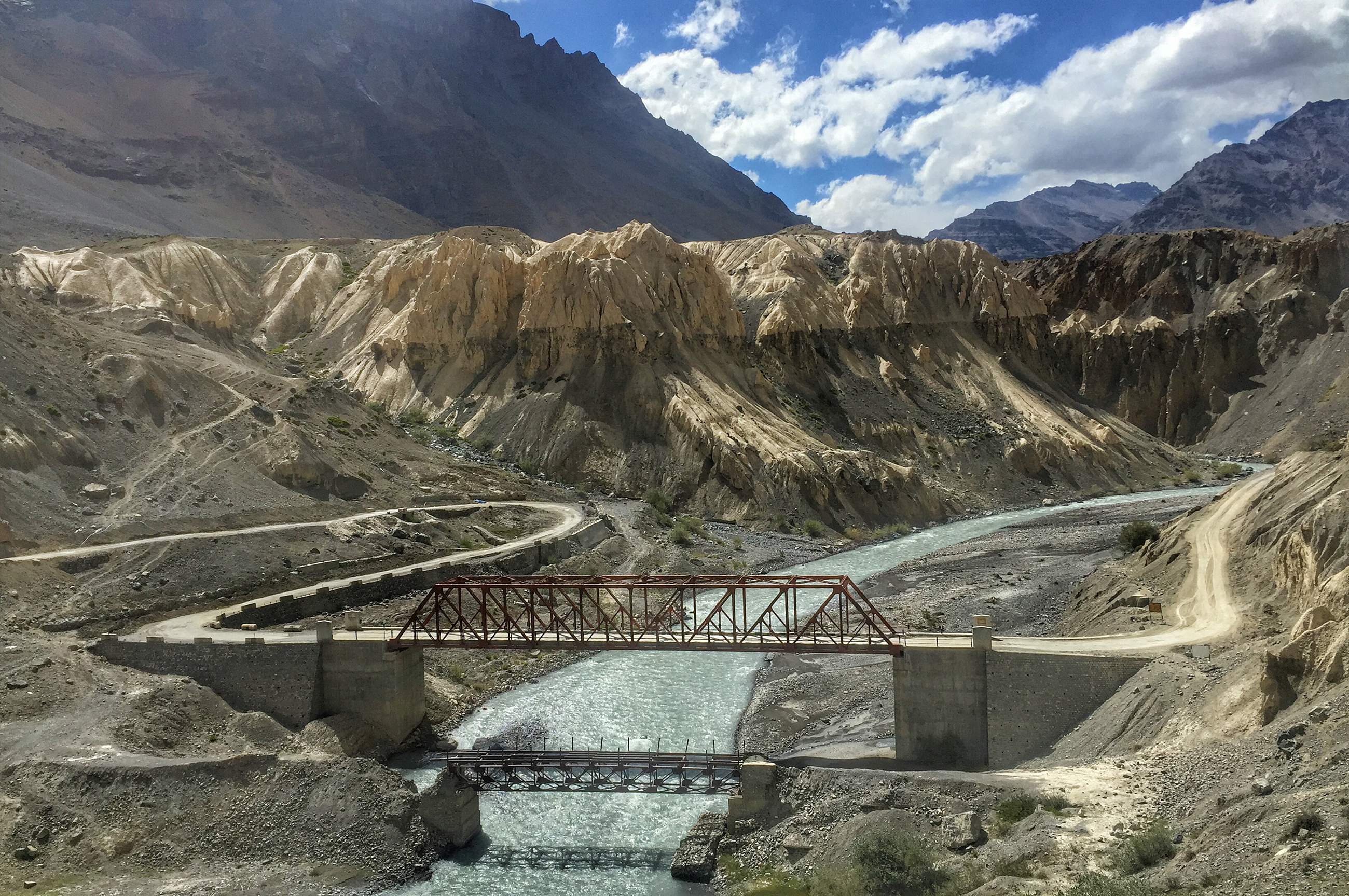
The day starts with a small trek from Mudh towards Pin valley. Enjoy the lovely sights of cattle grazing on the Himalayan grasslands. Post breakfast we leave for Kaza which is the biggest village in Spiti.
You can pick up some souvenirs for this trip from the Kaza market as it has a variety of items and local specialities. Get a good night to sleep under the starry sky.
Travelling Distance: 50km
Travelling Time: 2hrs
Altitude: 3800mts
Day 6: Kaza- villages of Spiti(Langza, Gaumik, Key and Kibber)
After Kaza, Spiti has small villages that have post offices, a police station, schools and a bus stand that are functioning to date.
Post breakfast we head to Langza, Hikkim, Gaumik. These villages are known for the fossils buried in the soil. Our next destination is the Key village that has the well-known Key Monastery.
The Key Monastery is the largest monastery of Spiti and it is also a training centre for Lamas. The brickwork of the monastery is covered with murals, which serves as a great example of the 14th-century monastic design. The night stay is at the Kibber village.
Travelling Distance: 69km
Travelling Time: 4-5hrs
Altitude: 4270mts
Day 7: Kibber-Chandra Taal

We depart for Chandra taal early in the morning. We also explore various mountains and lakes on our way. The Chandra Taal is a lake on the Samudra Tapu plateau. It is named after the moon due to its crescent shape and its ethereal beauty. The campsite is at Chandra taal.
Travelling Distance: 65km
Travelling Time: 2-3hrs
Altitude: 4300mts
Day 8: Chandra Taal- Manali via Rohtang Pass
We depart for Manali post breakfast. Manali is a resort town in Himachal Pradesh. It is based on the Beas river. The drive to Manali is very refreshing due to the beautiful views of the Rohtang Pass en route.
The Rohtang pass is known for its scenic beauty. Stopping at the Rohtang pass to enjoy the snowfall is bound to make your last day of the trip memorable. We reach Manali in the afternoon which is the end of our lovely trip.
Travelling Distance: 114km
Travelling Time: 4-5hrs
Altitude: 2050mts
Frequently Asked Questions About Spiti Valley:
Q.What is the best time to visit Spiti valley?
Ans: The best time to visit Spiti Valley is in summers(March-June).
Q.How many days is enough for Spiti valley?
Ans: A trip to Spiti valley at least requires 8 days as you need 5 days to reach Spiti from the Kinnaur side and come back via the Manali side.
Q. Can we take kids to Spiti Valley?
Ans. Your kid should at least be 12-18 months old.
Q.What is the temperature of Spiti valley in summers?
Ans: The temperature of Spiti valley in summers is 15 degrees Celsius during the day, and at night, it can be 4 to 6 degrees Centigrade.
Q.What is the distance of Spiti valley from Delhi?
Ans: 741km
Q.What is the distance of Spiti valley from Manali?
Ans: 200km
Q. Is Spiti valley open in August?
Ans: Yes, Spiti valley is open in August.
Q.How far is Kaza from Shimla?
Ans: 151km
Q.Where is Spiti valley located?
Ans: The Spiti Valley is an exquisite cold desert mountain valley in Himachal Pradesh, India. The stunning Spiti valley is located at a very high altitude in the Himalayas.
Q. Is there network in Spiti valley?
Ans: Only MTNL and BSNL mobile networks work in Spiti valley. No other networks including Reliance Jio, Airtel, Vodafone work in Spiti valley.
Also Read: Winter Spiti Valley Expedition 2020
Plan Your Tour With Us
DM us to know more about the best offers available at the moment.
Home| Blog | About Us | Instagram |Work With Us | Store
